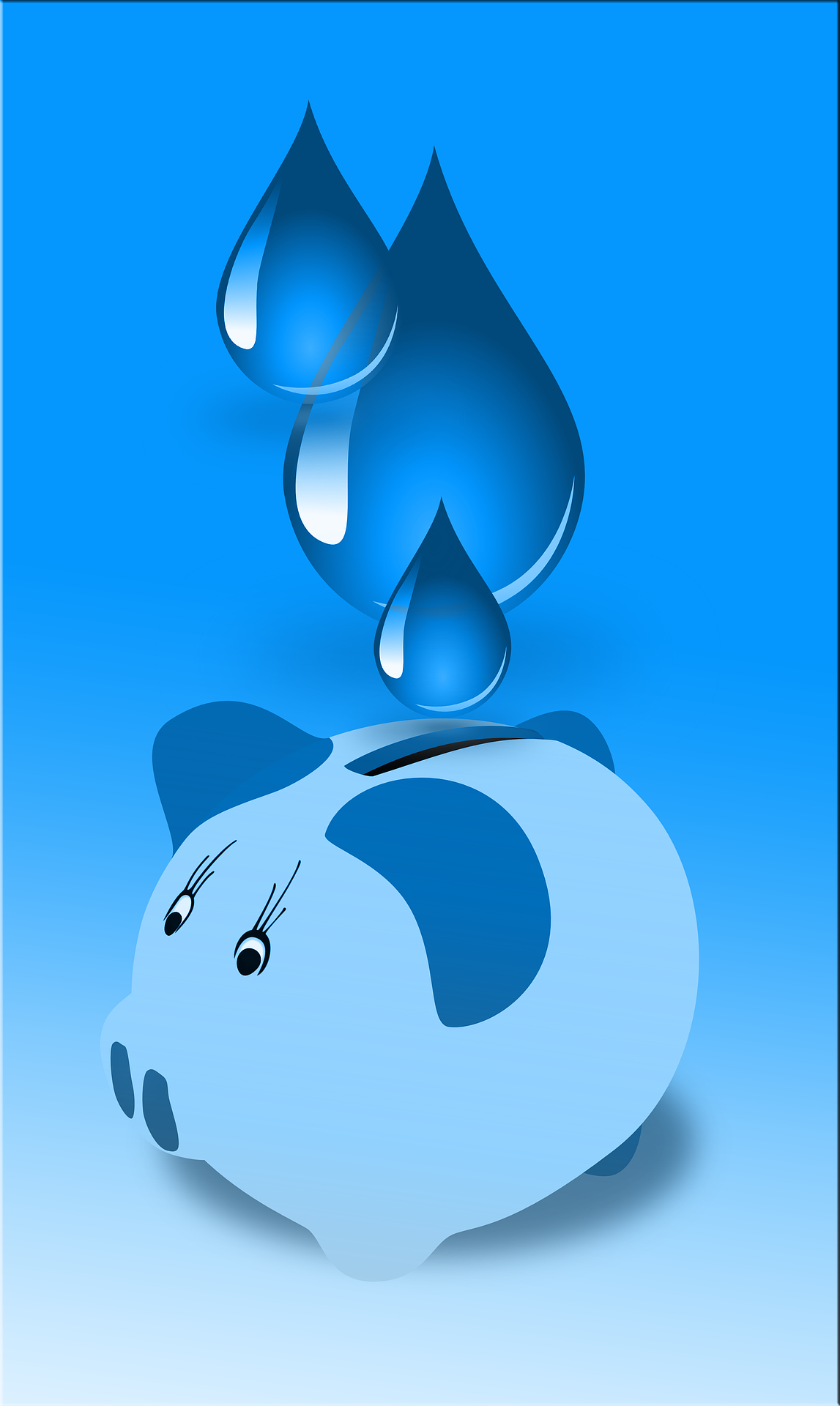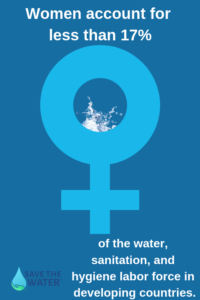By Keith Logan, Guest Writer for Save The Water™ | March 15, 2015
There once were three villages, and all were well. Over time, the first village ran out of water, the second village’s water became unclean, but the third village was able to keep their water clean and in abundant supply.
In the first village, when the water ran out, the people could not wash,drink,water their crops or animals; they could not live. The villagers quickly moved away, and the village turned to dust and blew away.
The second village had water, but it was contaminated. The crops survived, but everyone was always getting sick, especially the children. As the children got sick, they could not go to school; they stopped learning. Some aid workers came to the village, and offered that any children who could read and write the opportunity to go to a big school, but none of the children could go, because they never attended enough school to learn.
The third village had clean water. The adults and children were healthy. The adults were able to work in the fields and stores. They earned enough money to bring a good teacher to the village. The children were not sick, and were able to go the school and learned to read and write. The aid workers came to the third village and offered the opportunity for any children who could read and write to go the a big school to advance their knowledge.
Many children went to the big school, and came back to the village as young adults. They brought with them knowledge of renewable energy, global network economics, sustainable agriculture, and much more. The villagers built simple windmills to pump more clean water, charge cell phones, and charge batteries. They built latrines and water purification systems. The educated young people brought the knowledge of the internet to the village, and the village joined the global economy, and began exporting to the bigger cities. The village prospered, and life was good.
The world is now in three villages. Here is our story.
The first village; running out of water.
A harsh reality is before us, in that before we can speak of water and sustainable development, we must address the data coming in that indicates soon much of the world is not going to even have water, let alone good water.
According to a February, 2015 report issued by United Nations University, a unit of the UN, “Within 10 years, researchers predict 48 countries — 25% of all nations on Earth with an expected combined population of 2.9 billion — will be classified “water-scarce. …And by 2030, expect overall global demand for freshwater to exceed supply by 40%.” 1 For perspective, consider that 10 years ago Nickelback and Sheryl Crow were creating hits. Not that long ago, right? Now think about 25% of the world’s population not having enough water in just 10 years. Hec, it takes 10 years just to find help at Home Depot.
Hitting home? I am writing from California. We are having a drought; not just any drought; not even a 100 year drought. The Guardian, December 8, 2014 reports the following: “A new paper published in the journal Geophysical Research Letters by Griffin & Anchukaitis concludes that the 2012–2014 drought in California was its most intense in at least 1,200 years.” 2 Ouch.
Let us look at another smallish area…ah, yes…how about Sao Paulo, Brazil. The UK paper The Telegraph writes on February 23rd, “With the lowest rainfall since 1930, reservoirs that supply almost half of the 20 million people in the metropolitan area …are close to running dry.” For ten million humans, the water is being turned off in many homes at 10 am, and not coming on again until the following day. 3 The Telegraph states that this drought was exacerbated by mismanagement and cronyism. This is not Ethiopia were talking about here. This economic capital of the world’s 7th largest economy.
The Asian Development Bank reports that Pakistan’s water availability has “dropped five fold since independence” 4 , and it is now one of the most water stressed countries in the world.
So, if we want to bring this home to sustainable development; to people, planet and economic well being, we must embrace the fact that the momentum is toward material economic disruption caused by water scarcity, with a resultant absence of the ability to live, work or grow food in major regions of the world. This will wreck havoc on billions of humans, and have economic (and most likely military) repercussions across the globe.
How can making sure we do not run out of water; how can saving village number one be seen through the lens of sustainable development? By initiating a long term plan to build a water infrastructure based on the sustainability principles of restoring the environment, the economy, and the lives of people, all will be enhanced vis a vis the following:
- Restore urban watersheds. Studies indicate that a well vegetated watershed can store as much water as dams, without the disruption to aquatic life, provide for the natural replenishment of springs and rivers, and allow for a slow replenishment of water storage systems though the flow of the water through the regional aquifer. Floods don’t work well for water storage.
- By rebuilding the water delivery infrastructure, ie pipes, leakage can be reduced dramatically. It is estimated that up to 30% of Sao Paulo’s fresh water is lost in delivery due to leaky pipes. and that figure is repeated across most cities globally. Many of the world’s urban water systems are very old. According to Daniel J. Van Abs, a professor of water issues at Rudgers University, in a discussion regarding America’s older urban centers, “the pipelines are not just old, they are ancient. Many water supply lines and combined sewers are 100 to 150 years old“ 5
- Water reclamation and recycling systems allow for the purposeful reuse of perfectly good water. A National Public Radio segment on Feb. 24th of this year in discussing California’s water issues spoke of the value of making the re-use of grey water for lawns, golf courses, and other non potable uses a state wide mandate. By re-tooling the end user water systems, a very large amount of water can be reclaimed and re-used without the vast resource drain associated with building dams and moving water around the state.
All these concepts, if implemented, would employ hundreds of thousands of people. Secondly, employment puts money into the hands of people who spend it, thus increasing the circulation, or velocity, of money in an economy. Consumer spending is typically 2/3rds of an economy. This has a vastly greater impact on lifting a society out of poverty than stock and bond investments by the wealthy.
The UN University report concludes with a comprehensive list of actions which can lead to water health and sufficiency. Among the most notable, beyond making efficient water, waste water and sanitation management a global priority, are two stand out recommendations. The report states that up to 30% of the aid funds for water are lost due to corruption. This is corroborated by a report from the Overseas Development Institute (ODI), which gives the example of Uganda. Here, a political culture of patronage is developing, where patrons dole out funds to “clients” to get their loyalty. 6 Building mini-fiefdoms is expensive, no doubt.
The second stand out is agriculture, which uses approximately 70% of the worlds water supply. Agriculture needs to be held accountable while making the transition to more efficient and sustainable practices. 7
Village number two: cleaning the water.
The most ubiquitous concept in the United Nation’s literature on water is the relationship between clean water and the health and education of a society’s populace.
Simply put, sick children don’t go to school, and uneducated people can not lift a society out of poverty in the 21st century.
It is not all gloom and doom. Much real progress has been made with the aid funds that reach the projects on the ground. This means real people, having real water, and moving out of poverty. These are more than just statistics.
According to the ODI report, between 1990 and 2008, there has been good progress in getting water to rural African populations. 8 In Uganda, the percent of rural population with access to clean water increased from 39% to 64%. In Zambia, 46% of the rural population had clean water, as compared to only 23% in 1990.
An emerging and hopeful track for getting clean water to rural populations is in smaller, less expensive, distributed low tech processes; i.e. water harvesting, (an age-old indigenous process),rehabilitating small dams, and the installation of basic wells with pumps. These processes are decentralized and low cost relative to major infrastructure programs. 9
The organization African Well Fund, (inspired by Bonno’s 1990’s efforts to inform the West of rural Africa’s water needs), as of 2012 has implemented 314 projects, serving 335,000 rural Africans, at a cost of slightly more than $1 million. The AWF project in Labobo, Angola, a deeply rural community with no functioning roads in or out, saw the successful creation of 9 springs and 93 latrines, serving 13,500 people. There are several decentralized charity NGO well programs for Africa as well as the AWF, including The Water Project, and Charity Water.
A trial program of rehabilitating older small dams in Togo (located in Sub-Saharan Africa) has had very promising results. Fifty eight percent of the Togan population of 3,744,000 is rural. 10 Togo has only had a 4% gain in rural access to water in 19 years. “The capacity of two small dams was expanded by more than twofold, stretching seasonal availability to year round supply of fresh water. Each of the dams serves an average of 13 villages of 1,000 to 1,500 persons each, as well as their livelihood activities.” 11
The large global aid and financial agencies also have successes. A highly effective project, partially funded by the World Bank, is the rehabilitation and expansion of the urban water delivery system in Ougadougou, the capital city of Burkina Faso. The world bank put $70,000,000 into the $205,000,000 project which tripled the number of people who have access to clean water in the capital from 300,000 to over a million. 12 The World Bank also funded a rural water and sanitation project in Madagascar. “In the 1990’s only about 12 percent of the 12.5 million people living in rural area in Madagascar had access to potable water and hygiene standards.” 13 At the conclusion of the program, besides 400,000 people gaining access to safe water through wells and gravity schemes, the time involved in fetching water reduced to only 40 minutes a trip, water consumption doubled, and cholera was reduced by 100%.
These results give hope, and tell us that even with the managerial, structural, and operational challenges associated with large donor projects, real people are having their lives dramatically improved through access to clean water and sanitation.
One possible funding mechanism that may be able to be successfully applied to rural water projects is crowdfunding. A quick scan indicates that currently crowd funding water projects are very small, ($2,500 to $200,000), and few seem to have been successful. However, that may be a function of the projects, not the funding mechanism. Crowd funding may also be a way to bypass the patronage system and corruption that occurs when funds flow through a nation state system. Direct to village programs however, may lose the hard won coordination with the nascent yet effective 21st century administrative and system organizational structures being implemented in many countries. The jury is out, but it appears promising.
The world is waking up and working on village number one. With the destabilized global hydrologic systems we are all living with, our common humanity may be all members of village one. Village two is in great need, yet there are a great many people and resources being directed at solving the problem. Village three is happening. Not en masse, but step by step. Africa is rising out of poverty faster than most regions of the world, more people have clean water than before. If we are vigilant, if we stay involved, if world is lucky enough to have leaders who can and will address universal access to clean, healthy water, then we will see sustainable development thrive as the community of village three walks proudly into the 21st century.
References:
- Carty, P, 2015. “Brazil Drought: Worst Water Crisis In 80 Years Affecting Four Million People In Country’s South East.” https://www.ibtimes.co.uk/worst-drought-80-years-affecting-4-million-people-south-east-brazil-1484973 International Business Times. Accessed March 15, 2015.
- Nkem,Johnson N., Munang, R, Jallo, B., 2011. “Decentralizing Solutions For Rural Water Supply Under Climate Impacts In Sub-Saharan Africa.” http://www.environmentmagazine.org/Archives/Back%20Issues/2011/March-April%202011/rural-water-saharan-africa-full.html Environment Magazine. Accessed March 15, 2015.
- Nuccitelli, D, 2014. “California Just Had Its Worst Drought in over 1200 Years, as Temperatures and Risks Rise.” https://www.theguardian.com/environment/climate-consensus-97-per-cent/2014/dec/08/california-just-had-its-worst-drought-in-over-1200-years The Guardian. Accessed March 15, 2015.
- O’Meally, S, 2011. “Uganda and Rural Water Supply.” http://www.odi.org/publications/5478-uganda-rural-water-development-progress Overseas Development Institute. Accessed March 15, 2015.
- UN University INWEH, 2015. “World Must Achieve International Water Goals to Preempt Looming Conflicts Born of Desperation.” http://www.sciencedaily.com/releases/2015/02/150223104203.htm Science Daily. Accessed March 15, 2015.
- Van Abs, Daniel J. “Opinion: Do our urban water systems have what it takes to handle rapid growth?” https://www.njspotlight.com/stories/15/02/10/opinion-do-our-urban-water-systems-have-what-it-takes-to-handle-rapid-growth/ NJ Spotlight. Accessed March 15, 2015.
- Yohannes., 2009. “African Successes – One Pagers.” http://blogs.worldbank.org/africacan/african-successes-one-pager World Bank Blog. Accessed March 15, 2015.





